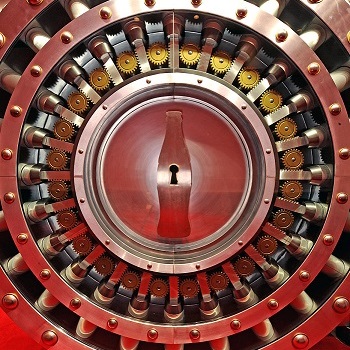Resources
Firm Insights
Land of the Lost Trade Secrets: A Cautionary Tale
Trade secrets are among an enterprise’s most valuable assets, often more important than its other forms of intellectual property. Every enterprise has them—or thinks it does until it learns otherwise in court.

©KFC
As the name suggests, a trade secret is a piece of confidential information that provides an enterprise with a competitive edge. Trade secrets include everything from marketing plans and customer lists to financial information (pricing, overhead, profit margins) and manufacturing processes. You are literally surrounded by them. Think of those mysterious hand signals from the third base coach to the batter or that live white rabbit the magician pulled out of his top hat or KFC’s closely guarded original fried chicken recipe. All are trade secrets.
But as the name indicates, a trade secret remains a trade secret only so long as it remains a secret. Once publicly disclosed, it is—quite literally—no longer a trade secret. And the burden of maintaining its secrecy is placed solely upon the company that owns it.
Too often, however, the focus of protection is on the legal documents you have your employees, contractors, and suppliers sign. Indeed, the existence of those documents is so pervasive that they are often referred to as NDAs, as in, “Bob, did you have him sign an NDA?” (For the uninitiated, NDA stand for Non-Disclosure Agreement.)
But the danger of an NDA is the false sense of security it creates. Valuable information will qualify as a trade secret if, and only if, the enterprise has taken “reasonable efforts” to protect its secrecy. While “reasonable efforts” include advising employees of the existence of a trade secret (often through use of an NDA or an employee manual), “reasonable efforts” also include, depending upon the information, limiting access to trade secrets on ‘need to know basis,’ controlling plant access, and other security measures.

Coca Cola Vault
The definition of “reasonable efforts” depends upon the nature of the trade secret. Done right, the lifespan and value of a trade secret can far outstrip the 20-year term of its closest cousin in the realm of intellectual property, the patent. Take, for example, the formula for Coca-Cola, regarded as one of the world’s most valuable trade secrets. Now more than 100 years old, that original legendary formula was moved, under heavy guard in 2011, from a vault at SunTrust Bank to a new vault on display for visitors to the World of Coca-Cola Museum in downtown Atlanta.
Fortunately, protection of your trade secrets does not require such extreme and unduly expensive measures. But attention must be given to establishing and maintaining basic security measures.
One of the many poster children for what can go wrong is DB Riley, Inc., a leading manufacturer of large industrial boilers. Riley also manufactures fuel systems for those boilers. The fuel systems grind coal into powder and then blow the pulverized coal into boilers where it is consumed as fuel. Those grinders require regular maintenance and replacement of worn and broken parts. Riley has contracted with other companies to manufacture parts for the grinders. Those contracts meet the basic requirements of an NDA. Among other things, they state that certain information (including specifications and shop drawings for the parts) is confidential and that the specs and shop drawings must be returned to Riley upon request.
When one of its parts suppliers went rogue, Riley sued for misappropriation of trade secrets. It had no problem establishing the first two elements of its claim, namely:
- that the shop drawings and specifications contained (according to the court) “the kind of information generally considered to be a trade secret if secrecy has been maintained”, and
- that its “formal, written policies for the protection of its trade secrets, if followed, are sufficient.”
But, as you will notice if you re-read that language, each of those two elements includes an important “if” clause. DB Riley Inc v AB Engineering Corp 977 F. Supp. 84 (D. Mass 1997)
Which brings us to the third element, namely, adopting reasonable security procedures to maintain the confidentiality of Riley’s trade secrets. That’s where Riley’s claim failed. As the Court explained:
“It appears, however, . . . that there was an unwritten, informal policy which overrode the formal policy. Consequently, design drawings were distributed haphazardly to both customers and parts suppliers for years. That being the case, the relatively weak proprietary statement on the Riley drawings does not preserve the trade secrecy of the information in the drawings.”
Sadly, Riley is but one of many companies who discover, in the middle of a lawsuit, that their precious trade secret has fallen into the public domain.
So don’t become the next poster child in the Land of the Lost Trade Secrets. Check with your attorney to make sure that your enterprise not only has the proper agreements in place but has taken the necessary “reasonable steps” to protect and preserve those trade secrets.
The choice of a lawyer is an important decision and should not be based solely upon advertisements.
Let's Work Together
If you have questions, we’re ready to help you find the answers.
Newsletter Sign-up
Join our mailing list and stay up to date with Capes Sokol!
By clicking the “Subscribe” button you
agree with our Terms and Conditions.
